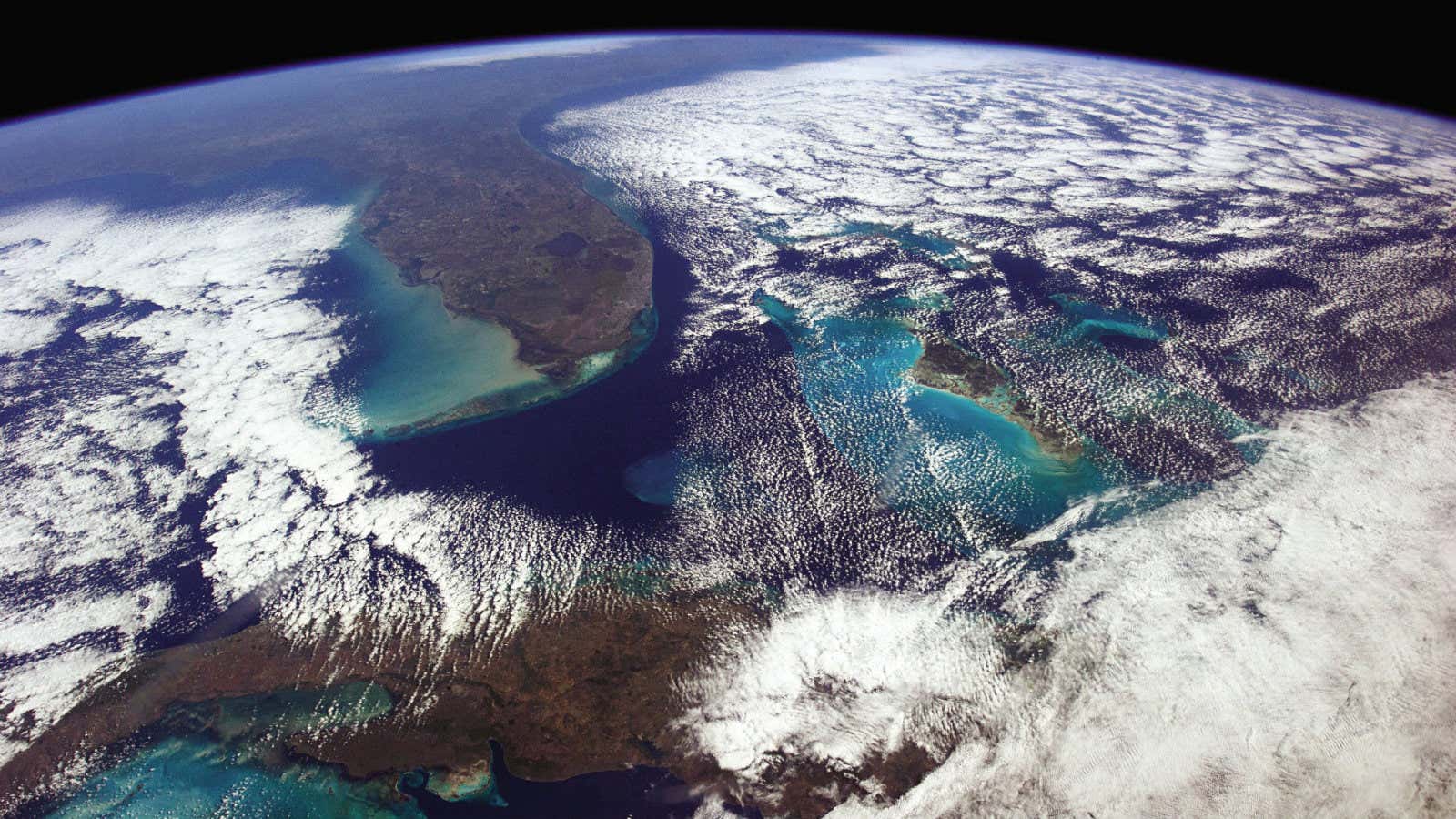On Christmas Eve in 1968, the astronauts of Apollo 8 saw a sight hitherto unseen by human eyes: The earth rising over the horizon of the moon. The photo that lunar module pilot William Anders took that day became one of the defining images of the 20th century, and forever changed the way humans saw their own planet.
“In lunar orbit, it occurred to me that, here we are, all the way up there at the moon, and we’re studying this thing, and it’s really the Earth as seen from the moon that’s the most interesting aspect of this flight,” Anders said later.
Many decades after Apollo 8, Canadian astronaut Chris Hadfield was up in the International Space Station, when his son, who was helping him get a handle on social media, suggested via email that Hadfield ask people on earth what they wanted him to take pictures of. “The resounding answer was, ‘I want a picture of my hometown, of where I’m from’,” Hadfield told Quartz.
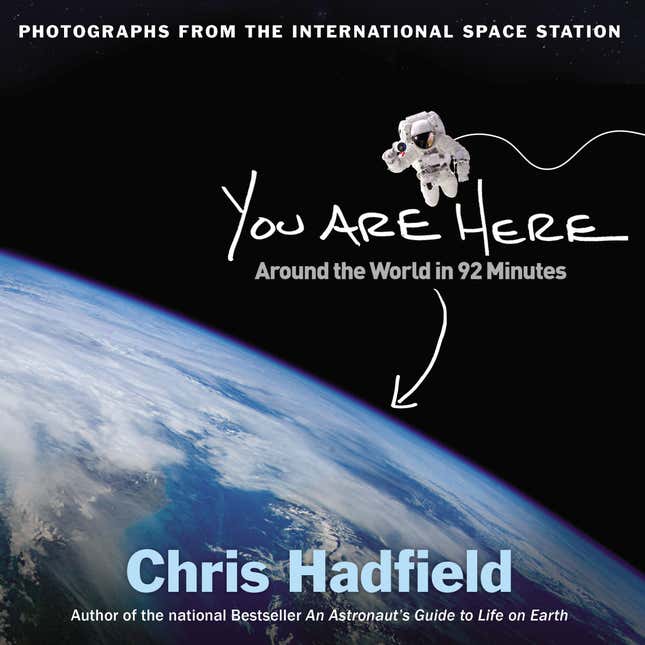
“To me that was delightful. At first I thought how narcissistic. But then when I thought about it, it struck me for two different reasons: people are proud of where they are from. And they have an ache and a desire to see how they fit in with everything else. It’s a dawning self-awareness, like seeing yourself in a mirror for the very first time, but on a global scale.”
Last year, Hadfield became the most famous astronaut on Earth when his Twitter account went viral. He gained over 1 million followers, whom he entertained and educated during his stint on the International Space Station with beautiful photographs of our planet taken from orbit.
In all, Hadfield took some 45,000 images, most of which were beamed directly to NASA and stashed in storage. “I had never seen most of them,” says Hadfield.
“It occurred to me last year, ‘What is going to become of that treasure trove of self-awareness?’ It would be a waste if nobody ever saw it. So I went through all 45,000 and chose a few thousand. But I can’t publish a book with 3,000 photos, so I took this this as my precept: ‘If somebody who wanted to buy this book were at the window next to me, what would I show them if we were floating around the world once?'”
The result is “You Are Here: Around the World in 92 Minutes,” an astounding volume of 192 full-color photographs covering every continent except Antarctica. Here are some highlights, along with Hadfield’s comments:
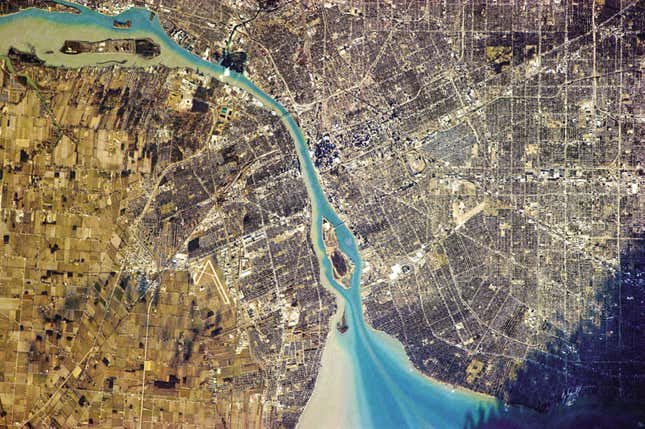
“There is a fanciful notion that borders are manmade constructs and you can’t see them from space. But you can, because of agricultural use, municipal patterns, even national parks. I chose these two images [above and below] very deliberately. You can also see the history of the two nations and the history of the land use in those two pictures, such as the long thin patterns of settlement in the French agricultural colonies [top left]. To me there’s a wealth of human information in that photograph. I find it intriguing to look at how our culture, economics, the invention of the automobile, all overlay and become evident just for a casual observer flying in orbit.”
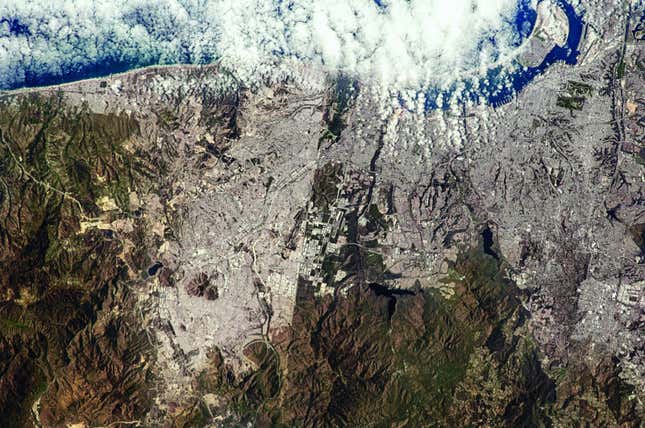
“The border between Mexico and California almost looks like a clog in a drain. You have this great pressure on one side trying to go through a very narrow plug at the bottom. It’s almost like the will of the people is visible from space. There’s no difference between the geology or topography on either side of that line. That is just a straight line drawn by some politician or leader a century ago. Yet it becomes such a defining line of people’s dreams.”
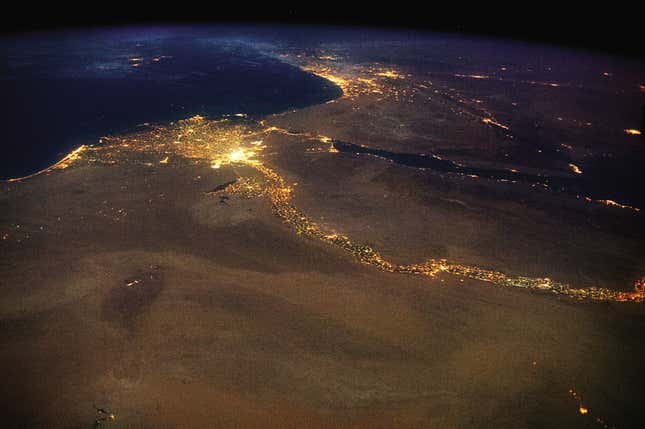
“All we know of our civilisation and history, everything from the Sphinx to what’s going on right now in Gaza, that’s all right there in one glance out of the window, brought to life by the lights of dusk. A fascinating part of the world to look at.”
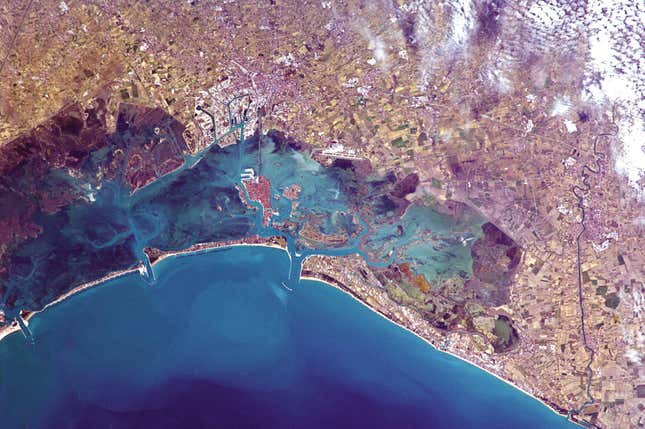
Hadfield writes in the introduction to the book that he was struck by how different the photos looked on paper than on his screen. This shot of Venice is a good example: “You don’t have time to think about the complexity of the image when you first take it. But when you get it on screen—or even better hold it your hand on paper, probe it with your finger, bring it to your eyes—you see it differently.”

“When you’re holding a camera, the process goes like this: You’re looking with your naked eye and seeing a vast expanse. And then something catches your eye because of color or a glint of the sun. So you grab a camera and do your best to take a picture. And then the image has disappeared. It’s somewhere in the camera and you can’t see it with your eye anymore. But you have a mental snapshot of how the picture looked. Then you open it on a computer and get a digital reminder of what you saw in your mind. Sometimes it’s a little different. A difference of colour, of perspective. You’ll often see things you missed, because when you were looking with your naked eye it passed by so quickly.”
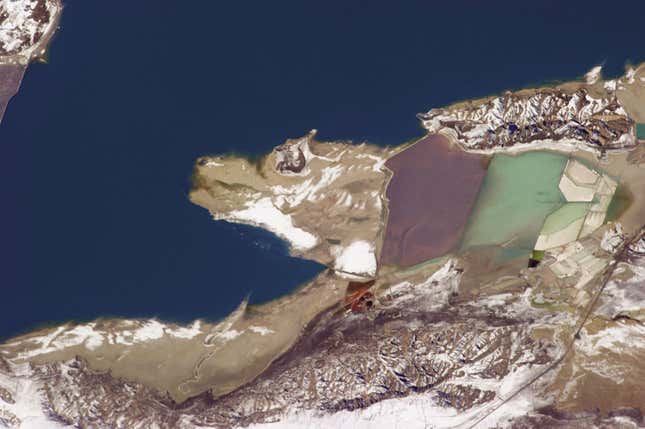
Hafield’s captions, both on Twitter and in the book, reveal a rich imagination. But maybe it is just experience, he suggests. “Most people have a sort of a fanciful vision of what an astronaut is. Choose your movie. But it is so very, very far from the truth. It’s a very disciplined and very highly educated and mentally agile group of people just because of the complexity of jobs we’re asked to do. There is a good mix of imagination but also a depth of experience and awareness. When you see one thing, you’re thinking of other things things you’ve had exposure to. So I don’t know if that’s imagination or just depth of experience.”
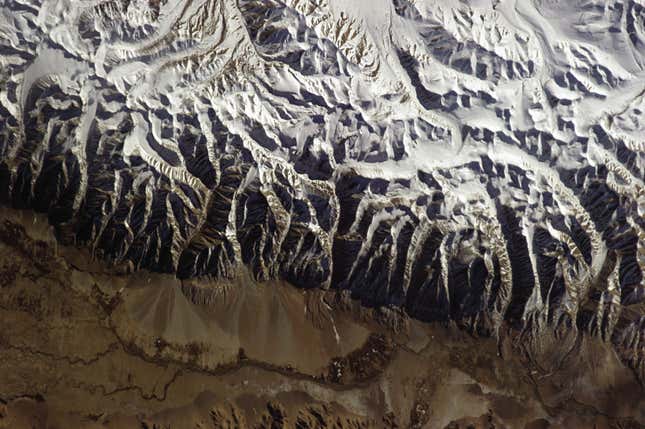
Hadfield says that he didn’t want his pictures to look like satellite images. Rather, he wanted them to have a human element. “Some satellite images are good by chance. But it’s random. Who is it judging that the picture is okay? It’s not the satellite, it’s us. So it’s almost always better to cut out the middle man—or the middle machine. If you can put the camera in the hands of someone who is interpreting real time, not only will they be likely to take that [good] picture more often, but they will see things are are transient but will otherwise be forever missed.”

“I don’t want to tell people what to think. To me that is both transient and ineffective. I would far rather present people with the reality of something in widespread detail and and let them think for themselves. It would have been very easy to proselytize and hit people over the head with it, to say ‘Look you’ve got to think like I do.’ That is not my role.”
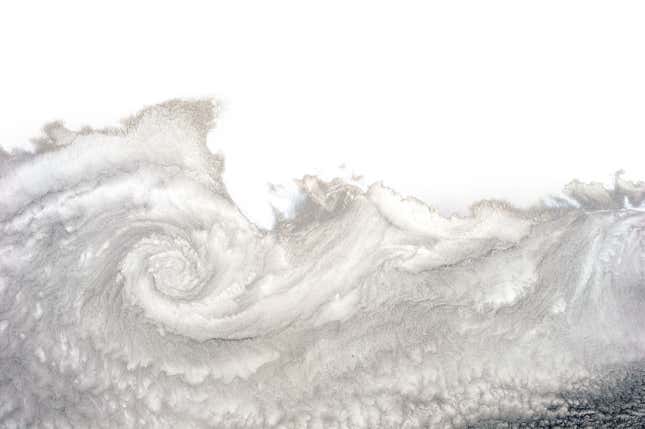
The mission that shot Hadfield to fame was also his last. He is now retired. “I actually don’t miss it. I think it’s probably how what I did for a living is perceived. Most people only become aware of the main events of other people. And they think ‘Wow, what a huge zenith of life. Boy, what a miraculous thing, everything else must be terrible. Or crushed into nothingness.’ It’s not like that at all. I don’t spend much time—actually virtually none—wishing that all of that was still happening. But there are a few people I miss, people who died before their time, pilots that I knew. The commander of Columbia who was a great friend of mine. I feel a great injustice that they aren’t still here.”

“The pictures belong to everybody. We’re donating the proceeds to the Red Cross. My motivation was not to get rich making this book. It was much more that I wanted people to see the world the way we see it from the space station and hopefully feel some of the change of perspective.”
You Are Here: Around the World in 92 Minutes by Chris Hadfield. Pan Macmillan, $29.95 and £20.
